As chess players, our styles of play sometimes depend on our mood and, of course, the importance of the game.
Sometimes we feel the need to close up the game to test our ability to maneuver around a complex position.
Other times, there’s the need to loosen up, test new waters, and allow our inner Mikhail Tal to roam free. In such cases, gambits are one of the best tools at our disposal.
Gambits are least expected by our opponents most times, especially unpopular gambits, and we can use this small element of surprise to our advantage. Some like to attribute the effectiveness of a gambit to its popularity, and here is a compilation of some of the most popular chess gambits today:
10. Benoni Gambit
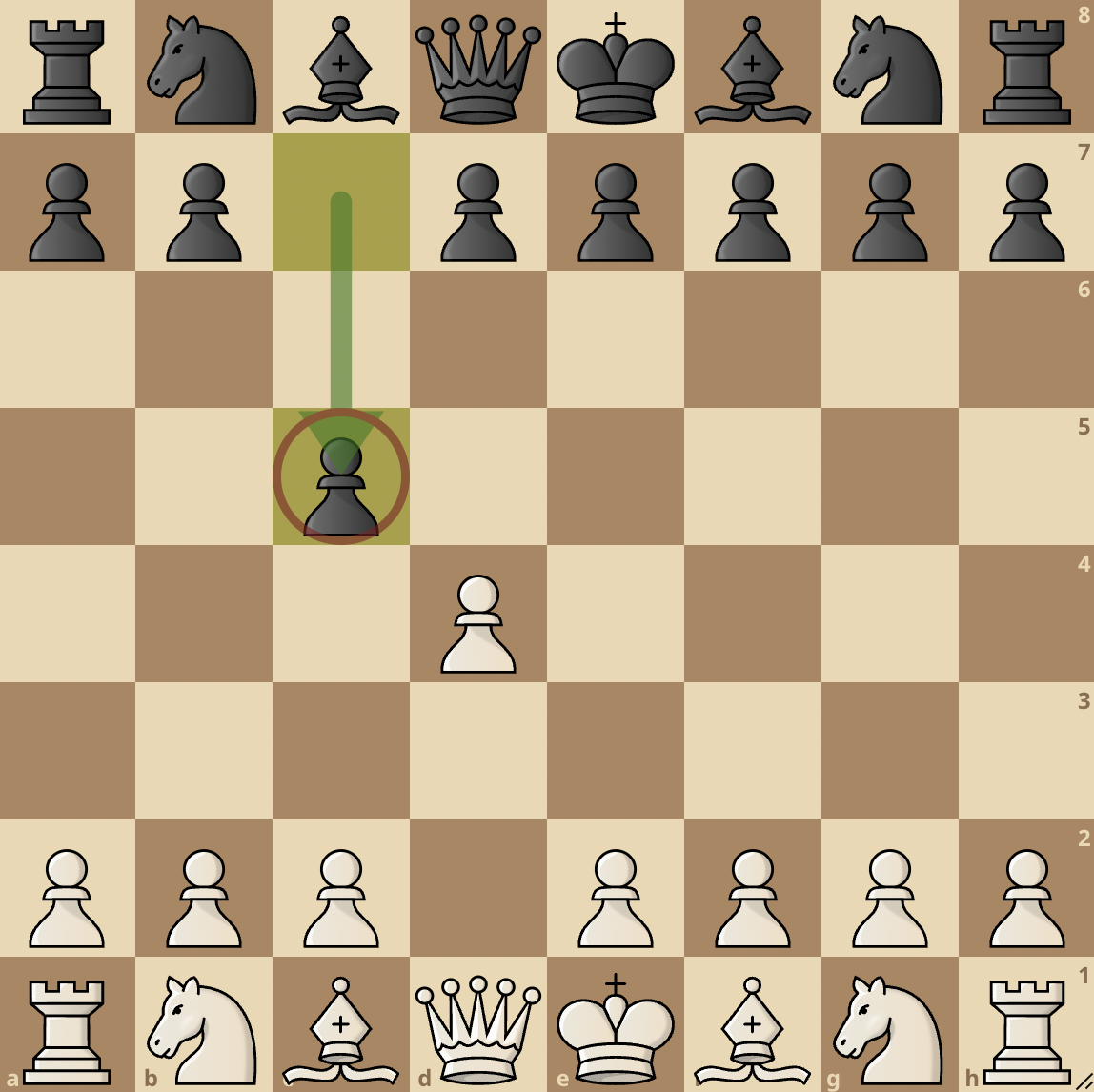
Unlike the safer Benoni Defense, which is categorized by the opening moves 1. d4 Nf6 2. c4 c5 3. d5, the Benoni Gambit, otherwise called the Old Benoni, is one way to spring a surprise at your opponent.
The Benoni Gambit responds c5 to White’s 1. d4. Intermediate and advanced players often prefer to advance the pawn rather than capture the c- pawn or defend the d- pawn.
Allowing the pawn to advance to your territory on the second move might seem risky, but there are solid and valid ways to get a good position. In fact, White risks overextension, and it all starts from that pawn.
Although the Benoni is one way to stop the “boring” lines of d4 players, it’s not recommended to use this opening in a formal setting, as even Stockfish calls it an inaccuracy. No one wants to make an inaccurate move on move 1.
Move 1 is like an amateur’s golden shot to not make a blunder, mistake, or even an inaccuracy. However, players who opt for this Gambit can count on counter-attacking play to get a grip on the game.
9. Englund Gambit
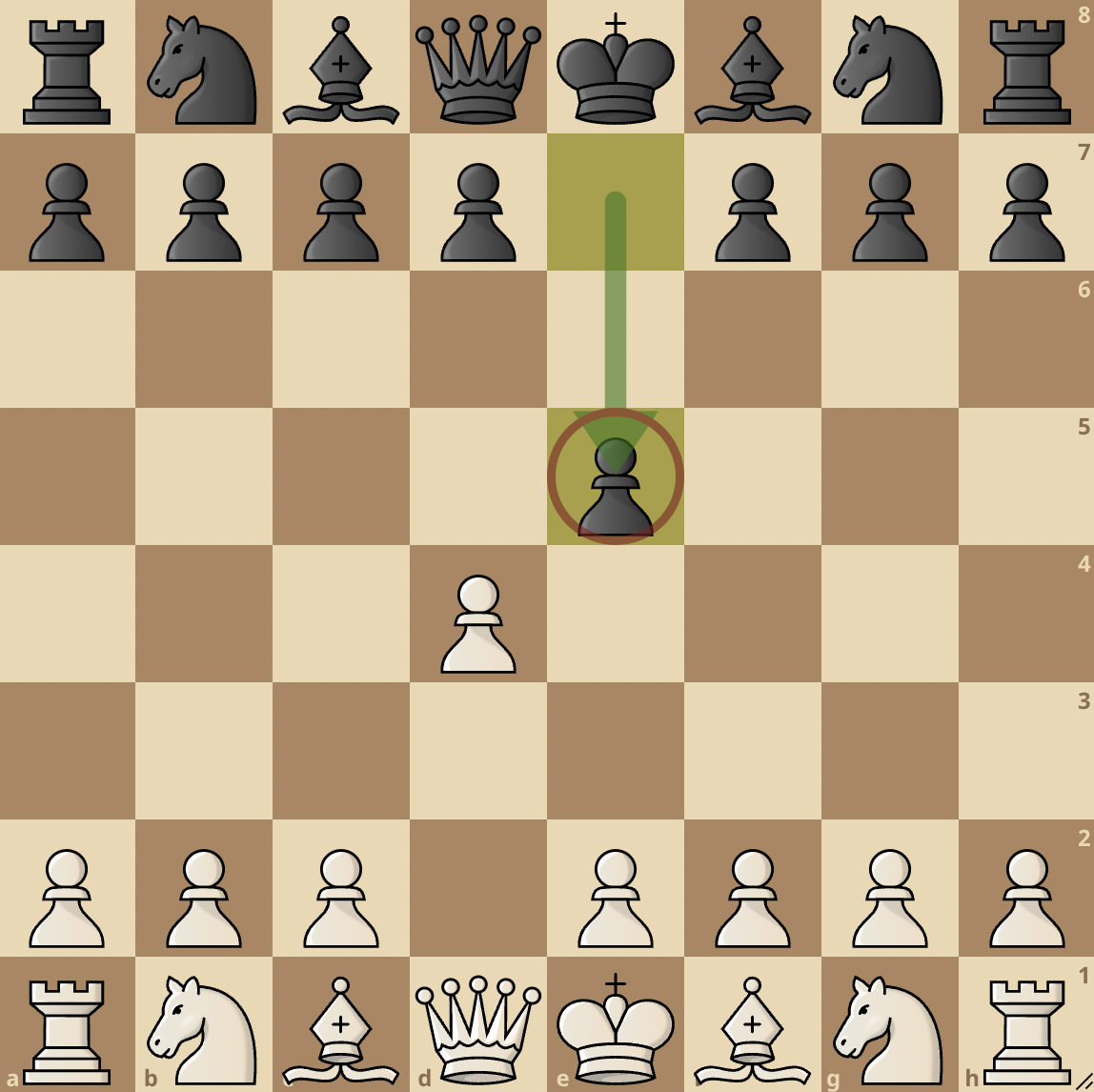
Although this gambit is seldom played in top-level chess, it’s one way to perturb d4 waters.
Many experts have practically dragged this gambit in the mud, but that doesn’t stop curious amateurs, inquisitive intermediates, and bantering masters from playing the Englund Gambit.
1. d4 e5 defines the Englund gambit. While Black loses a pawn initially, it can be gotten back after …Nc6, …Qe7. White even tends to fall into nasty traps in this variation.
However, accurate play by White usually leads to better development and Black may find themselves struggling at some point. No wonder, this gambit is considered unsound from time to time.
Another common continuation from 2. dxe5 is 2…d6. This simply means that Black has lost a pawn to have a lead in development, a common motive in most gambits. For other players, they initiate an instant threat to the pawn with 2…Nc6 and continue to bombard the pawn with threats, waiting for the opponent’s slip.
Alas, one can say that the Englund Gambit is a much less handsome version of the Scandinavian Defense(1. e4 d5).
8. Halloween Gambit
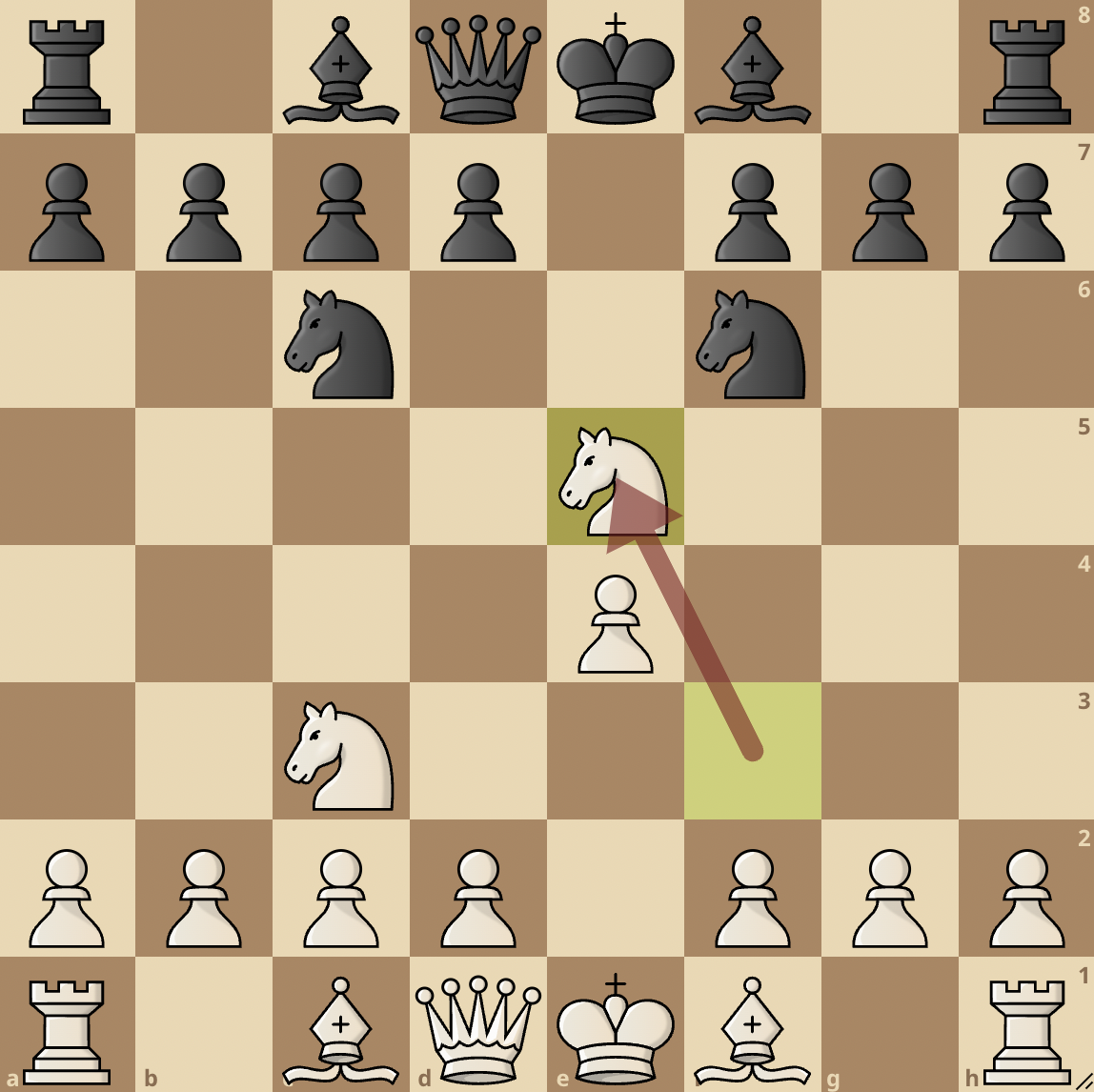
If you’ve never lost to the Halloween Gambit, then you probably need to play more speed chess online to acquire the experience.
This gambit, also called the Leipzig gambit, has its roots from the Four Knights opening, and the opening moves are 1. e4 e5 2. Nf3 Nc6 3. Nc3 Nf6 4. Nxe5!?
You saw that right. That’s an early knight sacrifice. Usually, opening gambits are done using pawns. Not the Halloween Gambit though. A Knight falls but more for positional superiority rather than instant checkmate or significant material gain.
The “Halloween” in this gambit’s name is not inspired by a city or player but by the expression given by the recipient of the gambit. In essence, the gambit tends to frighten players (at least at a time when it was more challenging to refute successfully).
The essence of the Halloween gambit is to gain deadly control of the center, right from the beginning. If the opponent accepts the Knight sac, d4 follows. After d4, e5 is a likely continuation to scare away the other Knight like it’s Halloween night.
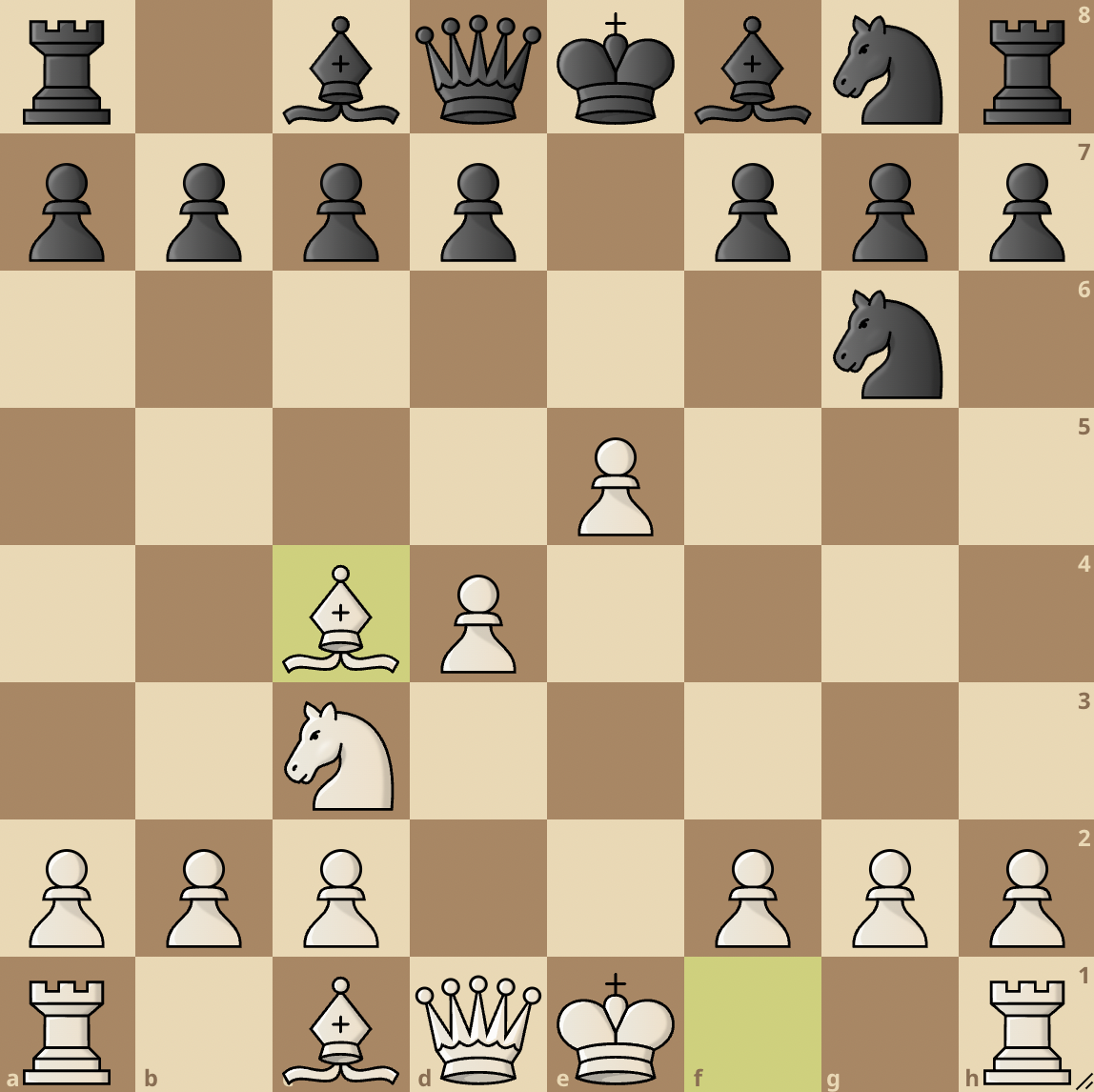
At the end, you can have a position that looks like the one above. White is a piece down but has a massive advantage in development. In most cases, Black has to give back a pawn or two to maintain a safe position. This gambit remains a useful weapon against players who have never encountered it.
7. Benko Gambit
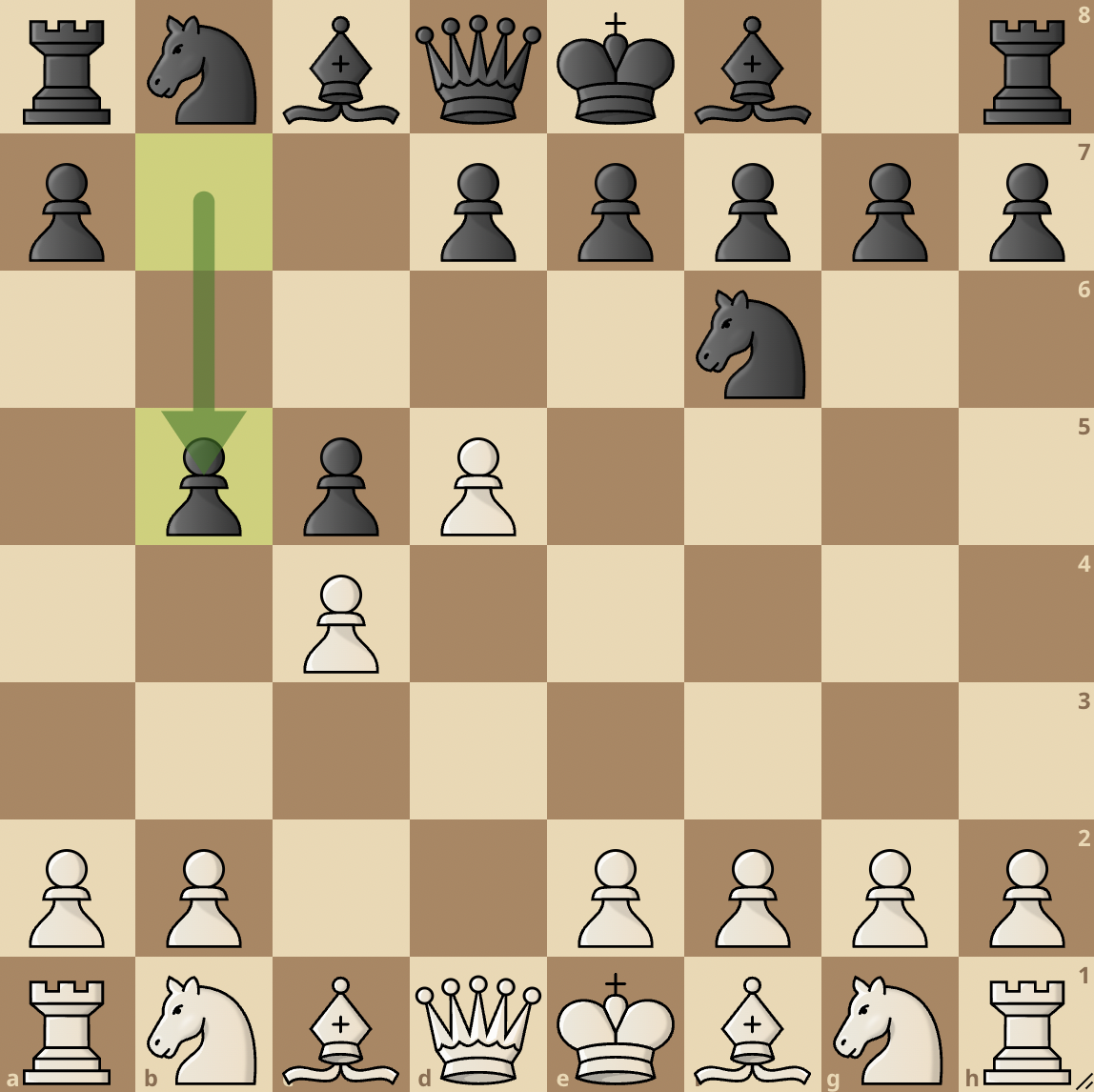
Pal Benko (1928-2019) made a lot of contributions to the development of chess; one of them is the Benko Gambit.
The Benko Gambit emerges from the Benoni Defense (not Gambit) when the following moves are made: 1. d4 Nf6 2. c4 c5 3. d5 b5
In what appears to be an early assault on the queenside, Black keeps on offering pawns in exchange for tempo. In the main line, White accepts the gambit and plays 4. cxb5, and then another pawn (a6) is offered as a sacrifice.
Once accepted, Black prepares for a fianchetto while having better control of the queenside. In summary, the Benko Gambit is another fine way to dribble past a prepared line under the d4 opening.
You can study the Benko Gambit here in finer detail.
6. Vienna Gambit
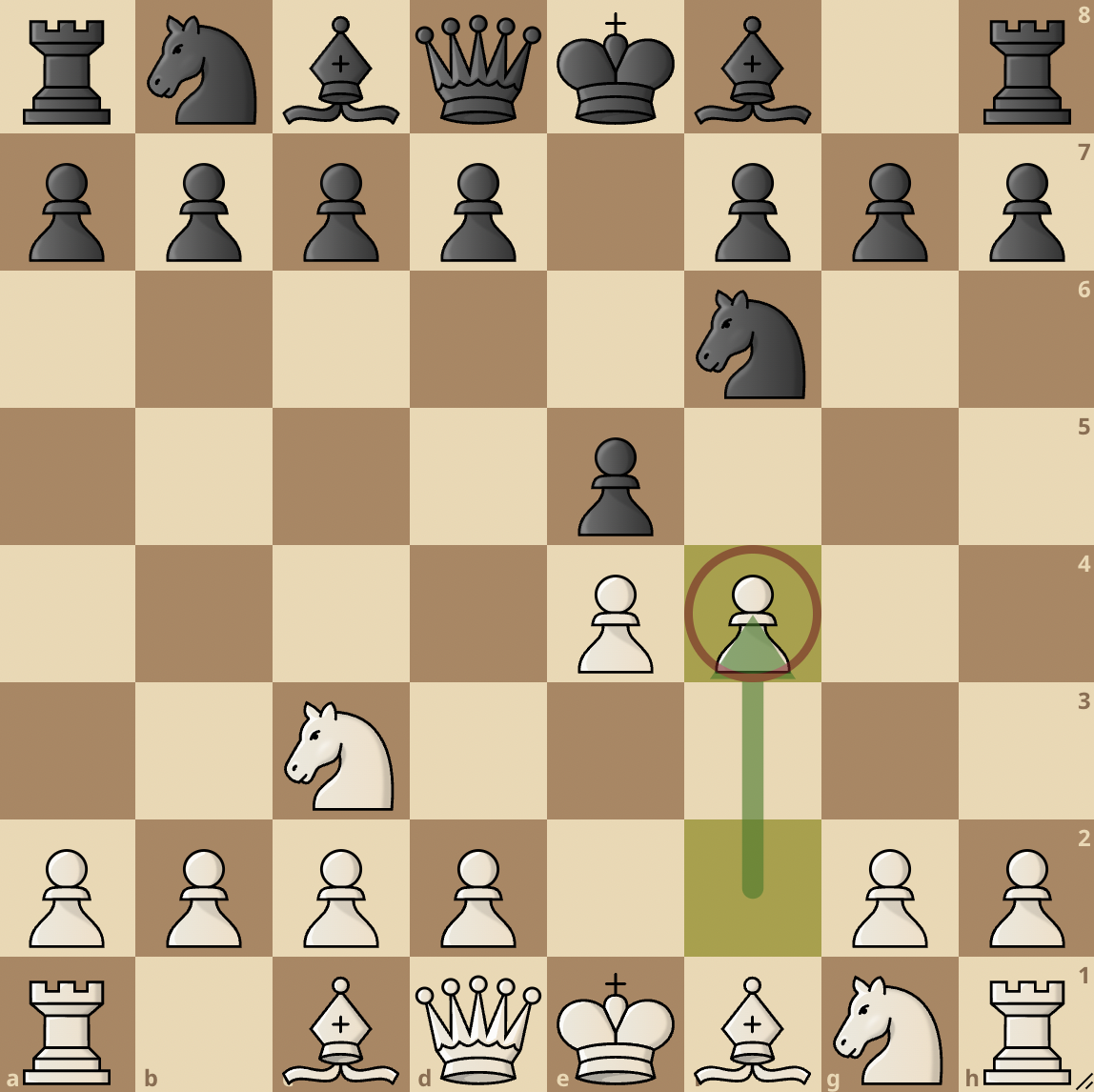
Of the plethora of chess gambits in chess theory, the Vienna Gambit that stems from the Vienna Game is one of the least criticized. The opening moves are 1. e4 e5 2. Nc3 Nf6 3. f4
The Knight move (Nc3) just before the pawn offer is a move that supplies strength to the e4 pawn’s control of the center.
The move gives White the luxury of initiating a gambit without the fear of a countergambit, making the Vienna Gambit deadly towards a player not familiar with its refutation. Finally, the Vienna Gambit aims to initiate a kingside attack right at the start of the game.
You can study more about the Vienna Gambit here.
5. Scotch Gambit
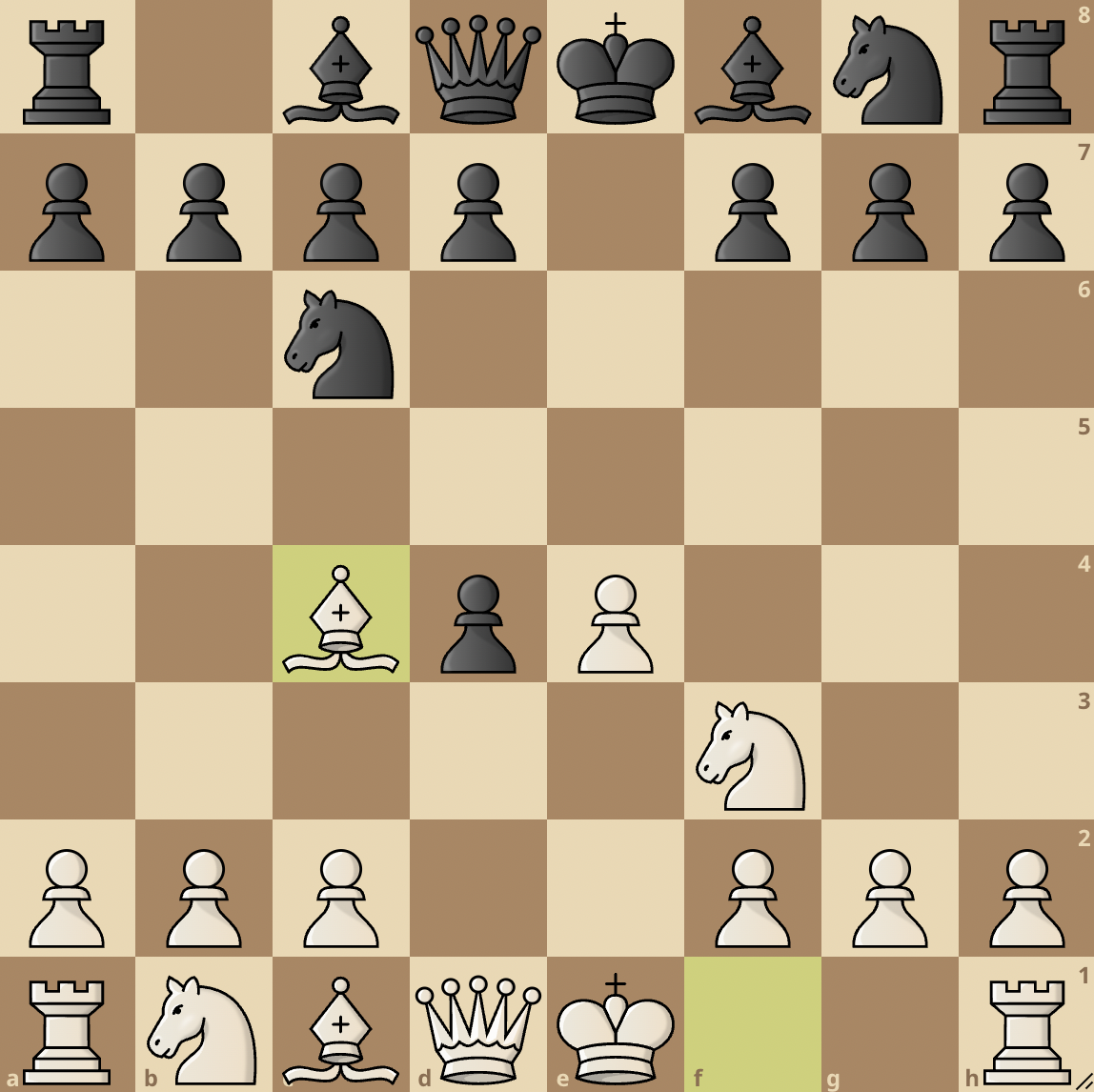
Because the Scotch Game is one of the most popular openings in chess, it’s no surprise that the Scotch Gambit is one of the most popular chess gambits. The moves that birth the gambit are 1. e4 e5 2. Nf3 Nc6 3. d4 exd4 4. Bc4.
Instead of immediately capturing the pawn on d4, White decides to go for a more aggressive approach. Their plan is to place the knight on the outpost square g5, where it will put tremendous pressure on Black’s weakened f7 pawn.
Black needs to be very careful in dealing with this threat so that means not wasting time on moves that don’t meaningfully improve their position.
Black’s best response to the Scotch Gambit is 4…Nf6. Nf6 attacks the e4 pawn and begins development on the kingside to enable castling. If White opts to increase pressure on the f7 pawn with say 5. Ng5, Black could play 5…Ne5 to neutralize the attack and initiate a counterattack.
At the same time, responding to 4…Nf6 with 5. e5 is the recommended move for White, but there’s the possibility of a sharp counterattack for Black with 5…d5 i.e. Black responds to the attack on their Knight with a counterattack on White’s bishop.
We can then have the following moves: 5. e5 d5 6. Bb5 Ne4 7. Nxd4 Bd7 8. Bxc6 bxc6 9. O-O and the position is all equal with equal material and similar piece development.
You can study more about the Scotch Gambit here.
4. Evans Gambit
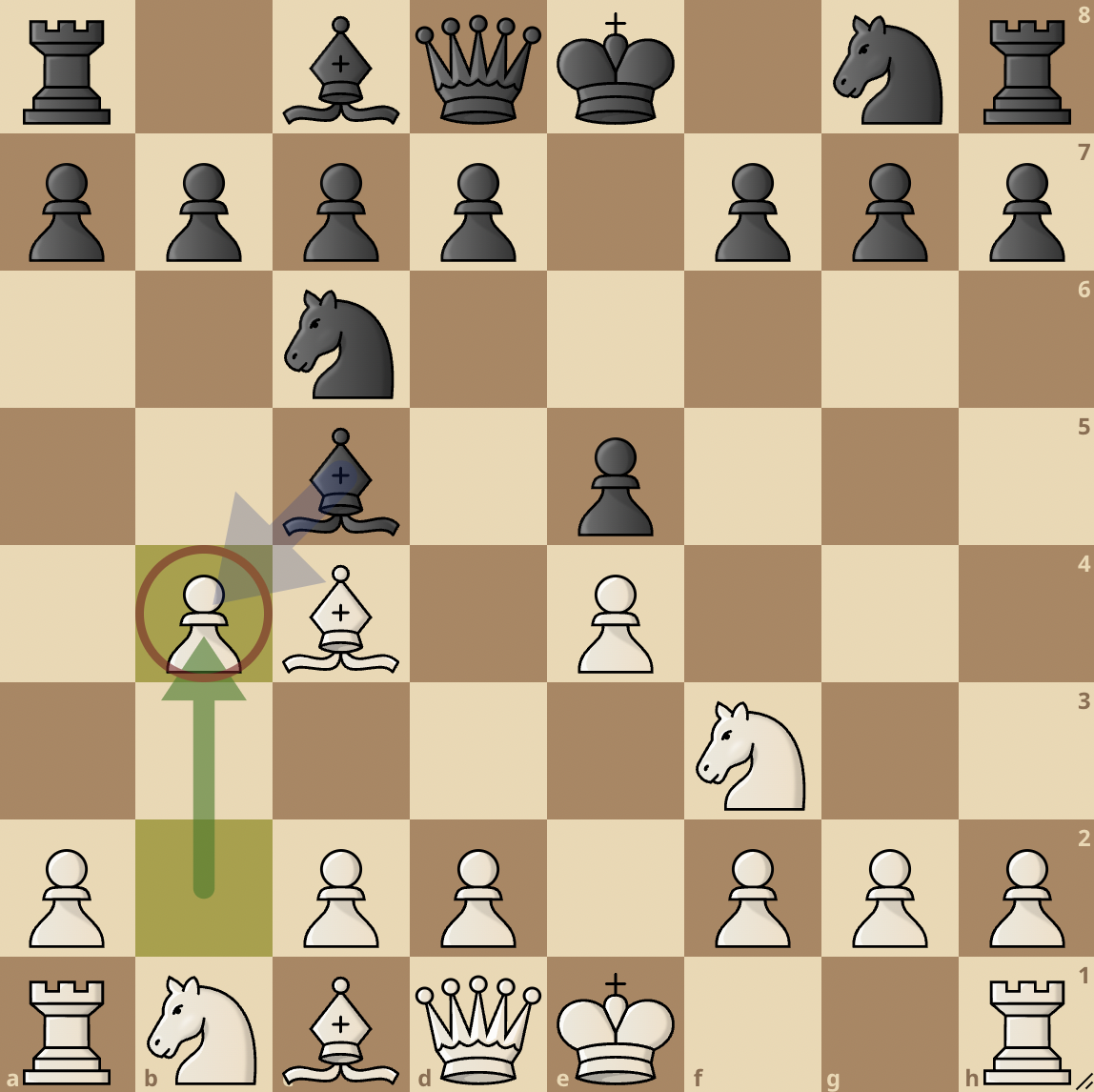
This chess gambit is characterized by 1. e4 e5 2. Nf3 Nc6 3. Bc4 Bc5 4. b4!?
It is one of the most aggressive lines of the Giuoco Piano. The objective of the Evans Gambit is simple and similar to the objective of many other gambits; sacrifice material to get a lead in development.
Playing this gambit is almost certain to blow the game wide open, and if you fancy open games, the Evans Gambit might be a good pick. If Black accepts the Evans gambit with 4…Bxb4, they might fall into a tight spot if they don’t have a good understanding of the gambit.
White would typically respond to 4…Bxb4 with 5. c3, preparing for 6. d4. One of the best responses to 5. c3 is 5…Ba5, but inexperienced players are likely to play 5…Bc5. It’s not a bad move, but it’s less accurate compared to 5…Ba5 where the c3-pawn remains pinned by the bishop in case of an inevitable 6. d4.
Azerbaijani Grandmaster Eltaj Safarli used the Evans Gambit against one of the most popular prodigies in the world today, Nihal Sarin. The game was played in the 2019 FIDE World Cup, and fascinatingly, GM Safarli won.
You can check out the game below. Touch the moves or move the board around for a better interactive experience.
So the Evans Gambit is safe to use in elite tournaments as long as the user knows the lines well.
Evans Gambit Declined
The Evans Gambit Declined line starts when Black refuses White’s offer of the b4 pawn. Instead of playing 4…B×b4, Black in this variation will move the bishop back, either to b6, d6, or e7. While the Evans Gambit Declined line is a way of avoiding the chaos that happens in the Accepted line, the computer however is not a huge fan.
Learn more about this gambit in our article on the Evans Gambit.
3. Danish Gambit
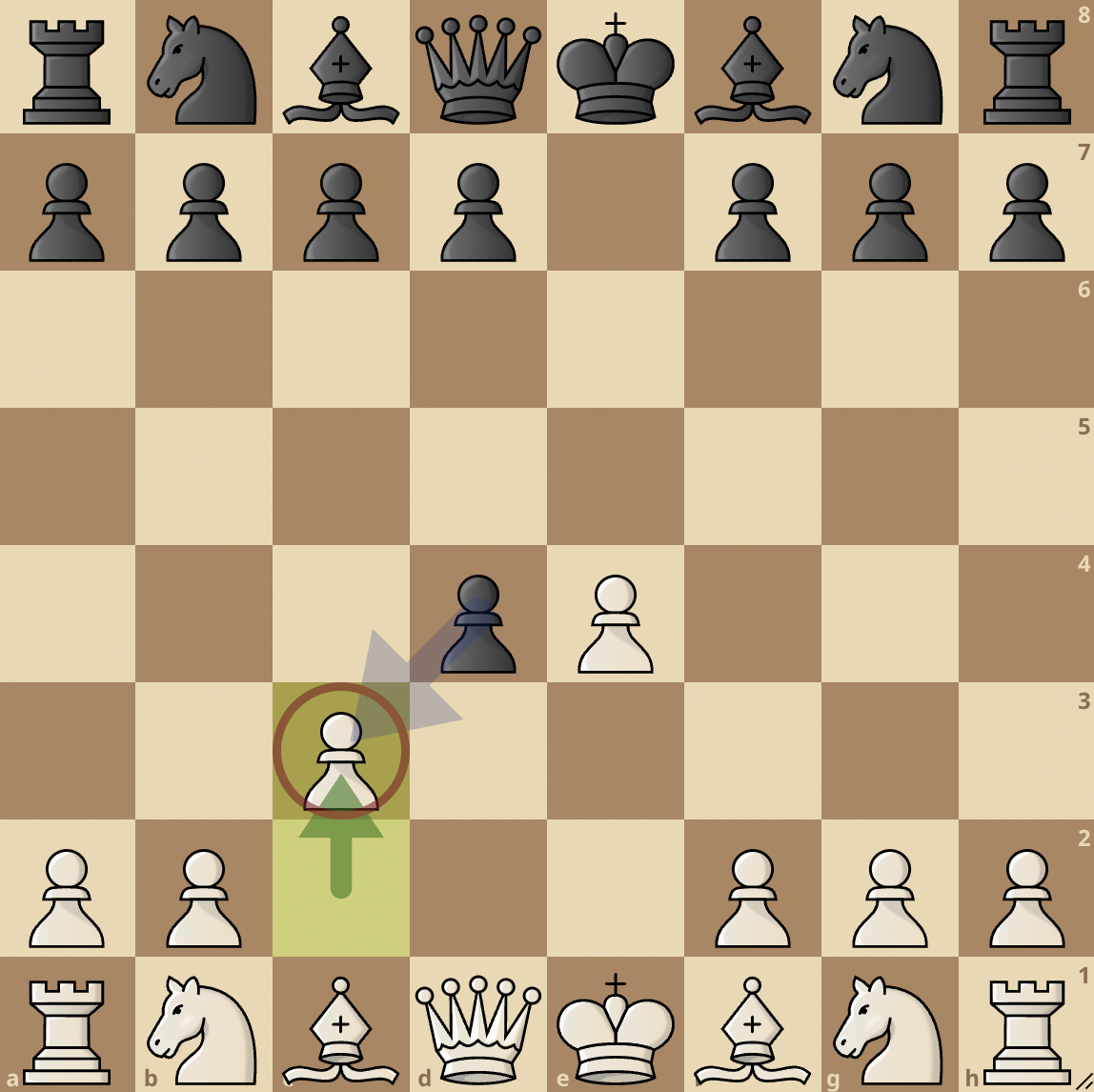
The Danish Gambit stems from the 1. e4 e5 center game and has become one of the most popular gambits today.
2. d4 is played after the center opening, and what comes next will look bizarre to first-timers. Black’s most efficient response to 2. d4 is 2…exd4 to prevent an enemy pawn from camping in their territory. After the capture, White doesn’t recapture with the Queen but instead lures Black’s pawn further into the enemy zone with 3. c3.
Black’s best move is to capture again on c3, and if White goes for the Lindehn’s continuation (4. Bc4), Black can now accept the Danish Gambit with cxb2.

Stockfish always prefers Black to accept the Danish Gambit even though White becomes miles ahead in development.
For a novice player, accepting the gambit could spell doom. But for an experienced player, the Danish Gambit accepted might not cause significant harm.
Legendary chess players like Alexander Alekhine and Jacques Mieses are some reasons why the Danish Gambit is so well-known.
You can learn more about this gambit in our article on the Danish Gambit.
2. King’s Gambit
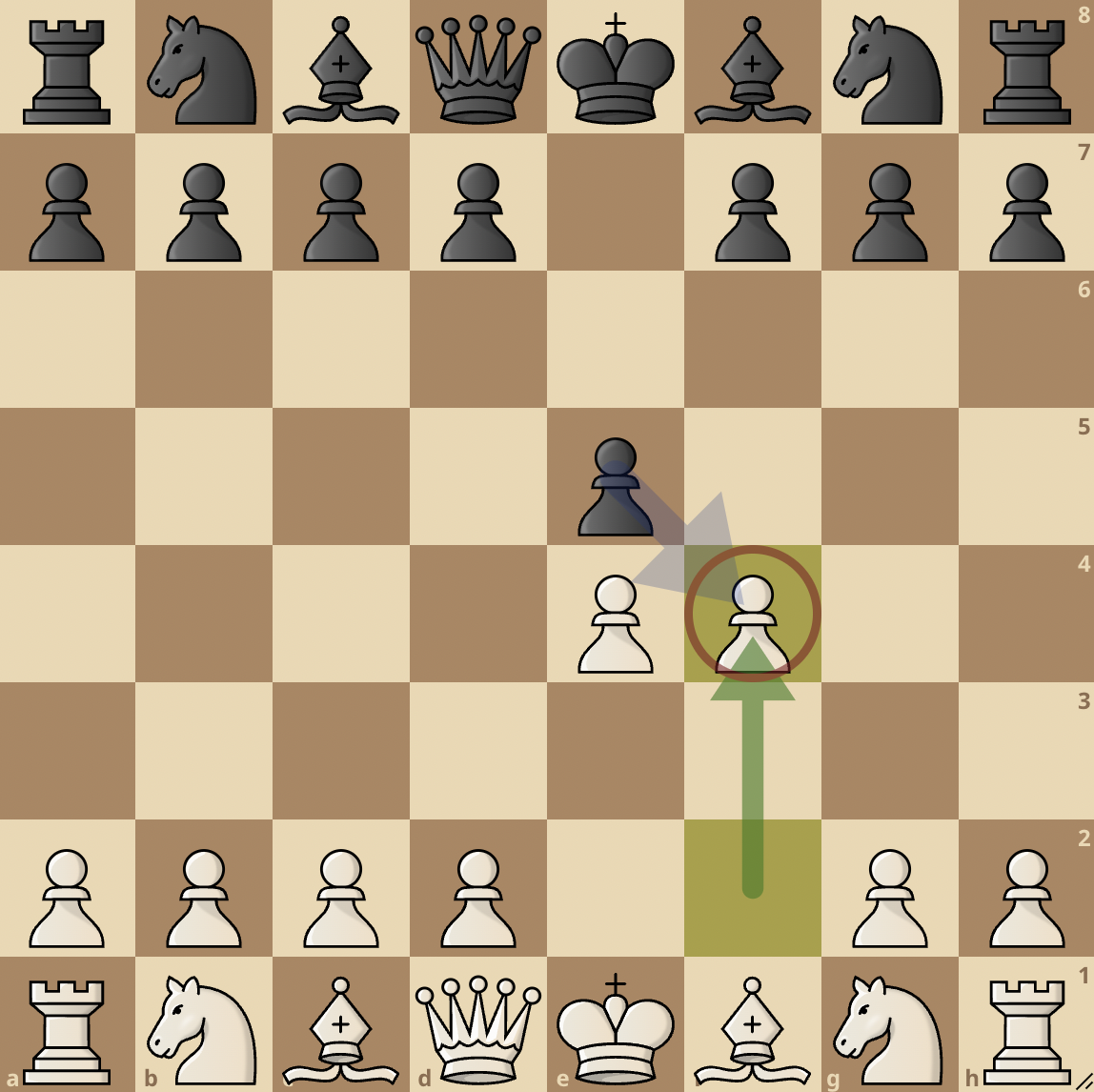
The King’s Gambit arises from the open game.1. e4 e5 2. f4 are the moves that indicate the King’s Gambit.
The objective of this gambit is direct and simple; gain early and immediate control of the center. This gambit has different variations for when it is accepted and when it is declined. You can be certain of an open and interesting game that focuses on attacking the kingside with the King’s Gambit Accepted.
In one of Boris Spassky’s famous wins over Bobby Fischer, the Soviet player used the King’s Gambit excellently. Fischer’s king was gaping in just 20 moves, and it became increasingly obvious that Fischer would lose the game.
You can check out the game below. Touch the moves or move the board around for a better interactive experience.
The King’s Gambit has different variations and we will now take a quick look at them.
King’s Gambit Accepted
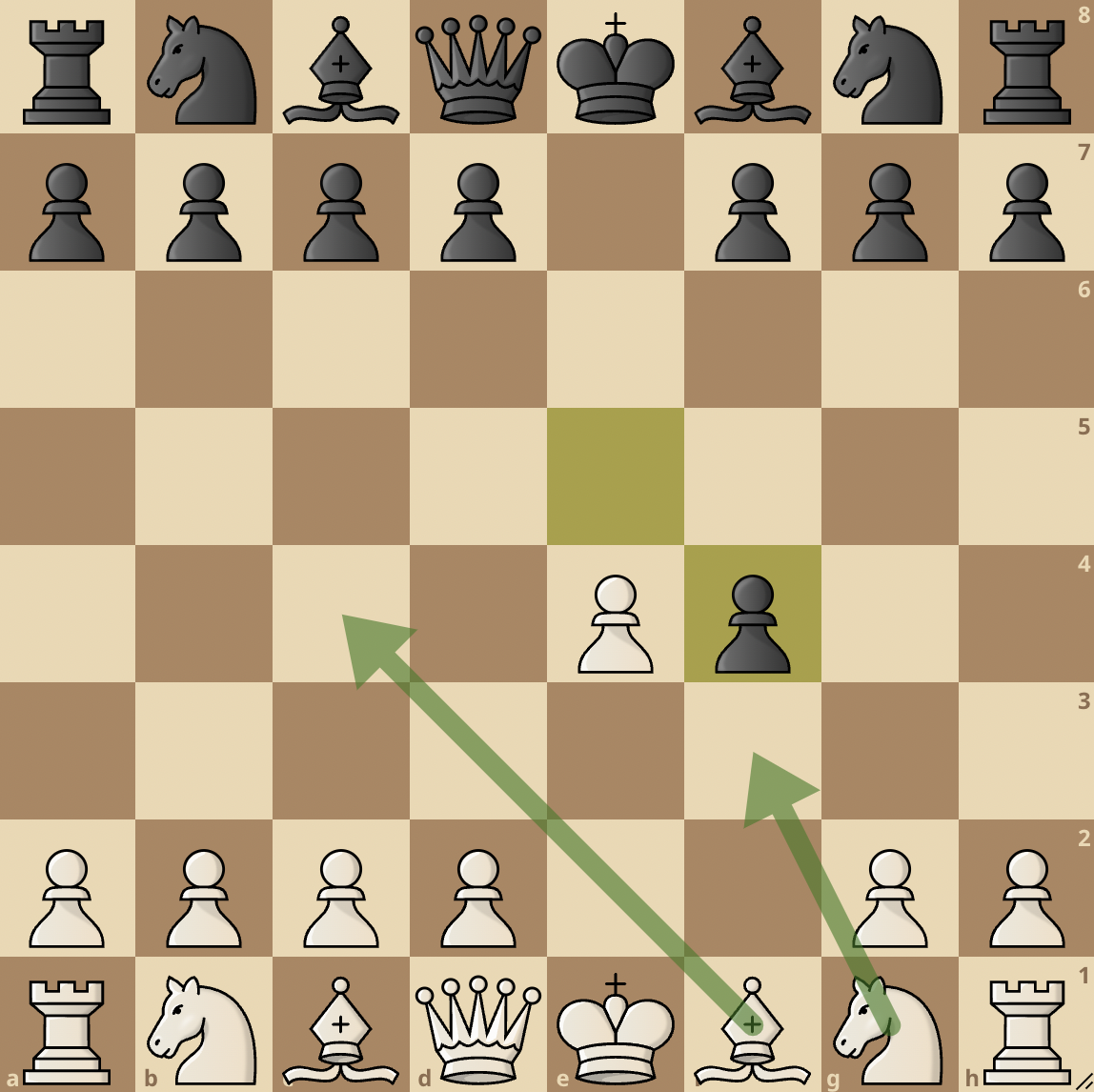
The King’s Gambit Accepted line starts when Black accepts the offer of the pawn with 2. e×f4. From here, White has a host of options like 3. Bc4, 3. Nf3, and others. The main theme of the King’s Gambit Accepted variation is sacrificing the f4 pawn, usually temporarily, to gain rapid development.
Falkbeer Counter-Gambit
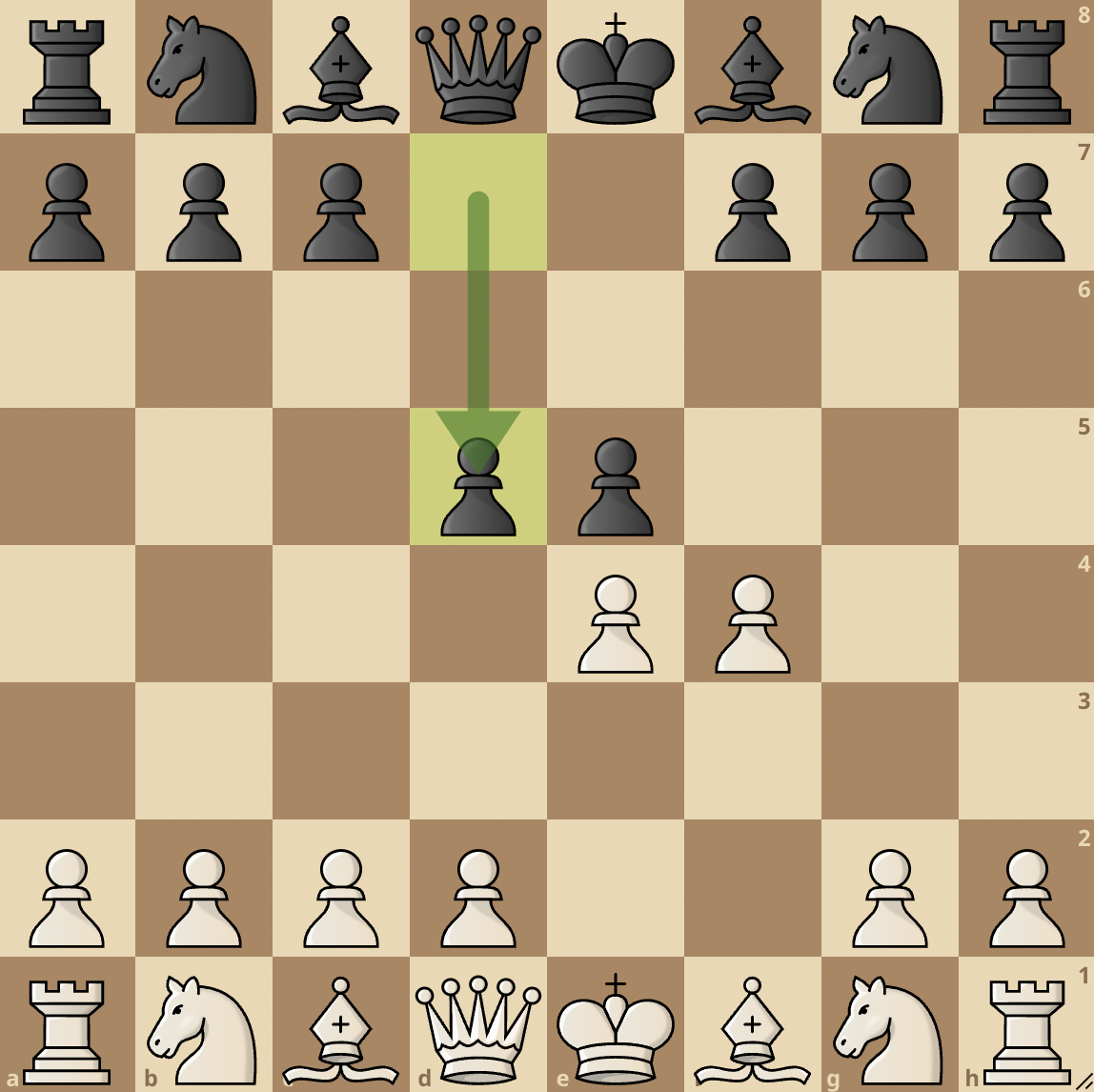
The Falkbeer Counter-Gambit is the kryptonite of the King’s Gambit. When the White player chooses the King’s Gambit as their weapon in the opening, they usually expect to be attacking and dictating play.
The Falkbeer Counter-Gambit destroys that hope. This gambit starts with the usual lines of the King’s Gambit, 1. e4 e5 2. f4. After White’s f4 move, Black plays d5, immediately challenging two of White’s central pawns and giving White a headache concerning what move to play next.
Players who are not very familiar with the Falkbeer Counter-Gambit can very quickly get into error. An example of a mistake White can make is if they play, 3. f×e5. After this move, White is in trouble. Black plays 3. Qh4+, a devastating move that will either result in a checkmate or severe material loss for White.
Overall, the Falkbeer Counter-Gambit is an excellent way for Black to respond aggressively to the King’s Gambit.
Bishop’s Gambit

The Bishop’s Gambit is one of the most common lines in the King’s Gambit Accepted variation. It starts with 1. e4 e5 2. f4 e×f4 3. Bc4.
Usually, in the King’s Gambit Accepted line, after 2. e×f4 by Black, White plays 3. Nf3. This is because by playing 3. Nf3, White stops the Black queen from infiltrating the King’s side with Qh4+, which would force the king to move and take away White’s castling privilege.
However, in the Bishop’s Gambit, by playing 3. Bc4, White allows Black to play 3…Qh4+, this is because, after Qh4+, White will move the king with 4. Kf1.

From this position, the Black queen looks silly and misplaced on the h4 square, and White can quickly develop their pieces while gaining tempo as Black will have to waste moves getting the queen to safety.
The Bishop’s Gambit is a more aggressive line of the King’s Gambit Accepted variation, and it gives White the liberty to quickly develop their pieces and start an attack on the Black king.
Muzio Gambit
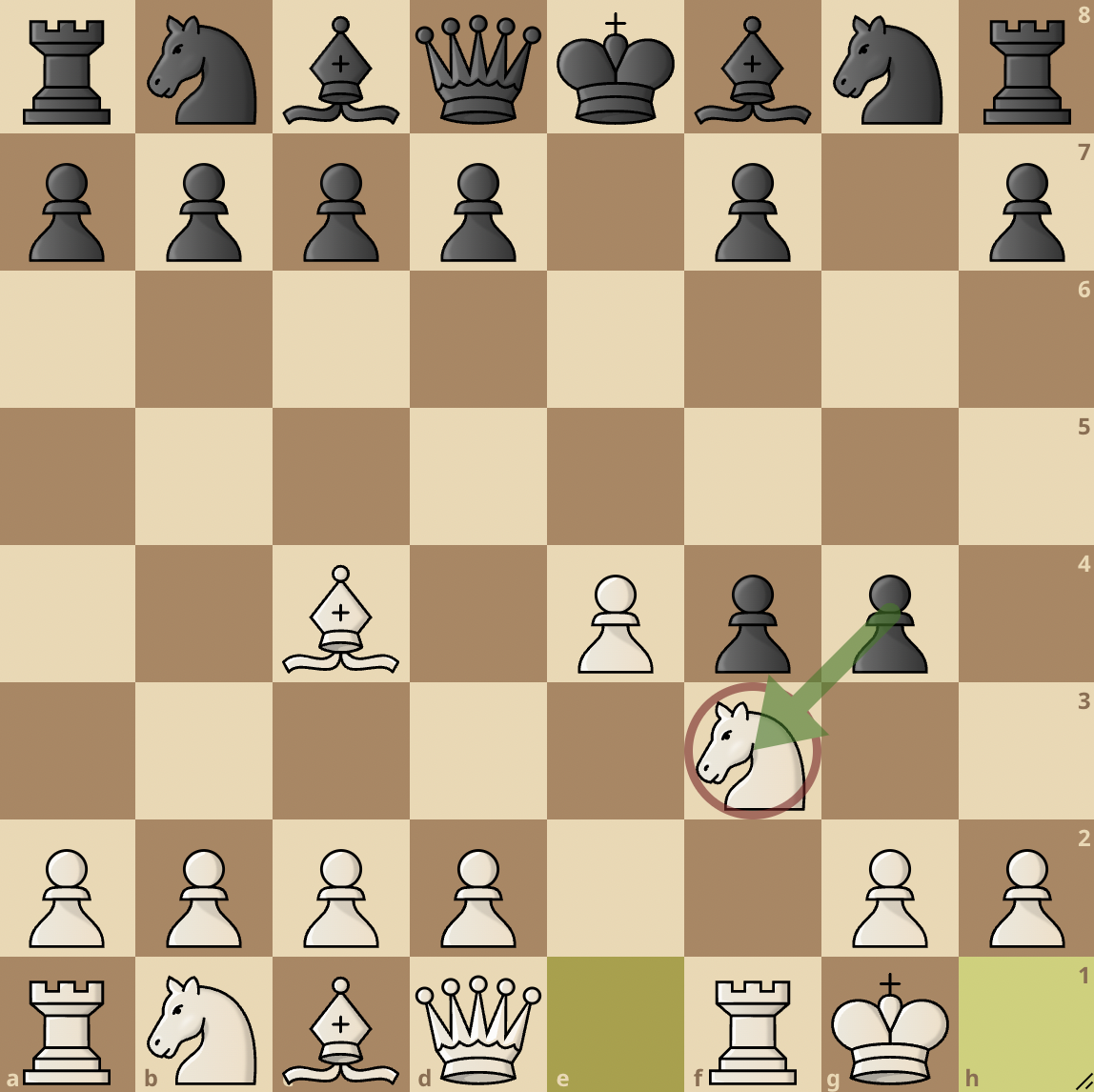
If you are a player who enjoys high-risk flashy openings, then the Muzio variation of the King’s Gambit is the one for you.
The Muzio gambit starts with the moves 1. e4 e5 2. f4 e×f4 3. Nf3 g5. After 3. Nf3 by White, Black plays 3…g5, looking to add protection to their pawn on f4.
From here, White develops the bishop with 4. Bc4, Black will then attack the knight with 4. g4, and this is where the Muzio Gambit starts.
Instead of defending the threatened knight on f3, White plays 5. 0-0, a shocking move, castling the king and allowing Black to capture the f3 knight. Black then captures with 5…g×f3, winning the White knight.
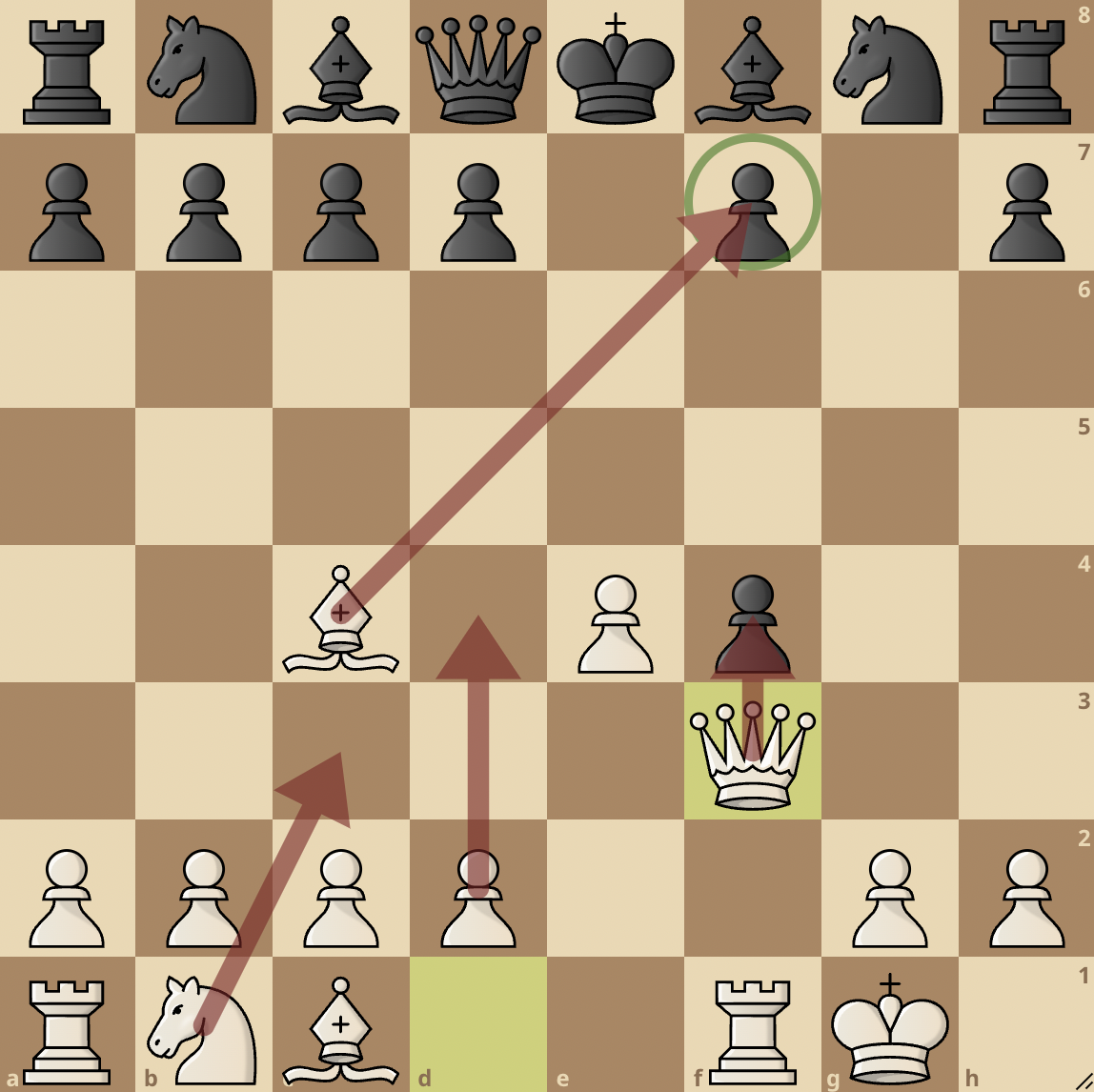
White will recapture with 6. Q×f3. From this position, although Black is up in material, their kingside is shattered, and the king is very exposed. Black will have a tough time trying to parry all the threats White throws at them, and if they are not careful, checkmate or severe material loss will happen.
The Muzio Gambit is an excellent variation in the King’s Gambit that you can implement in fast-time formats like blitz and bullet.
You can learn more about this opening in our article on the King’s Gambit.
1. Queen’s Gambit

Beth Harmon. That’s a name that always comes to mind whenever we hear “Queen’s Gambit.” The show has contributed to making the opening one of the most popular openings in chess.
It goes 1.d4 d5 (closed game) 2. c4.
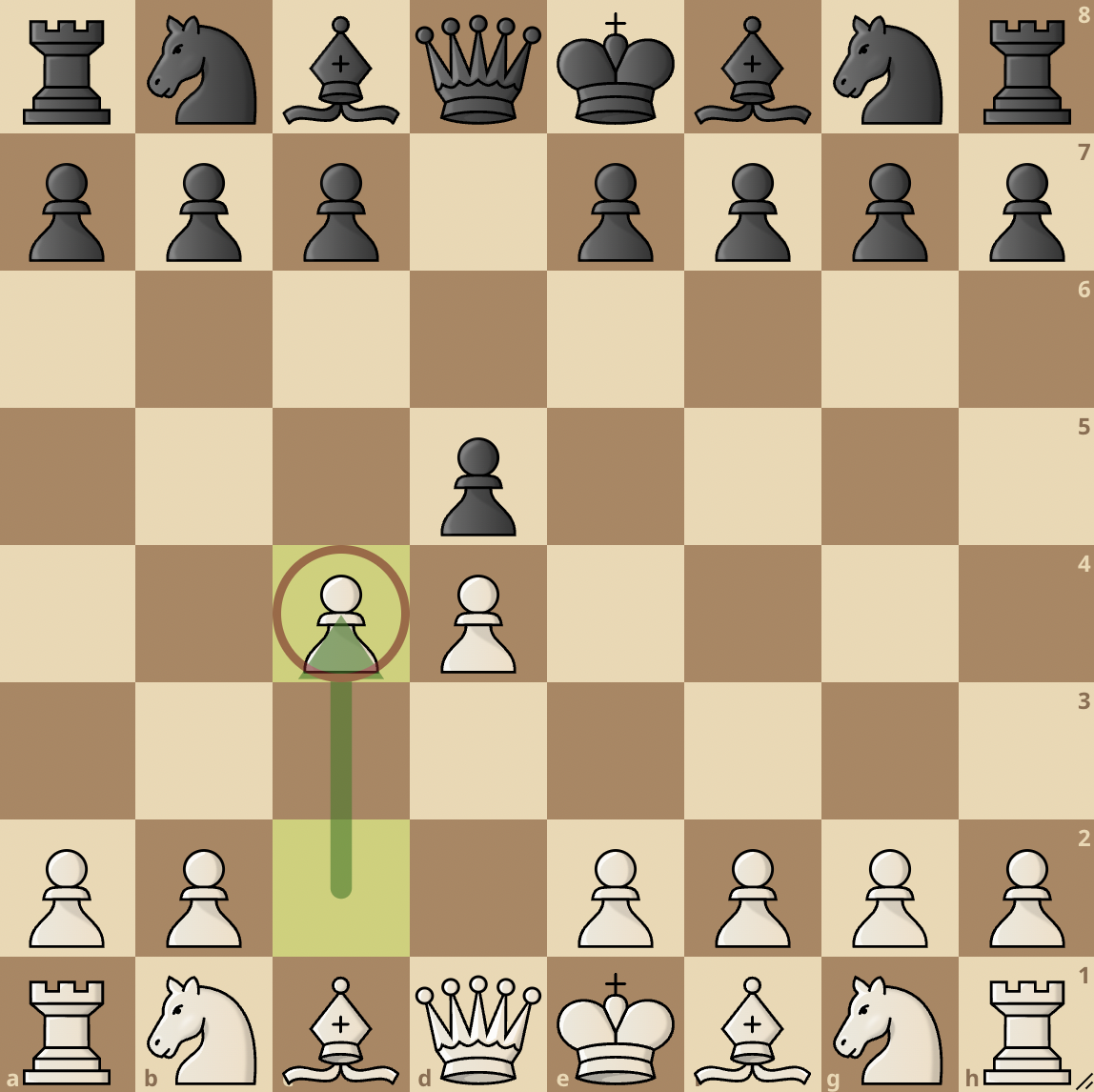
If Black accepts the gambit, holding on to the early pawn advantage can cause severe problems. Many of us have fallen victim to the idea of protecting the pawn that accepts the gambit, and we learned the hard way. Here is a reference.
Using the Slav Defense against the Queen’s Gambit will probably not be preferred by White but there are still several options to explore.
The Marshall Defense (2..Nf6) can also be a tempting option for newbies who do not want to accept the gambit. But that’s an inaccuracy as White can play 3. cxd5 Nxd5 4. e4 and White has a strong center, unlike Black.
Everyone is recommended to add the Queen’s Gambit to their repertoire because, at some point, it pops up.
To further understand the Queen’s Gambit, we will examine some of its variations:
Queen’s Gambit Accepted
The Queen’s Gambit Accepted variation occurs when White accepts the offer of the c4 pawn with 2. d×c4. From here, White can attack the pawn by playing 3. e4 or 3. e3. Black has to be very careful and know that the pawn has to be given back. If Black persists and stubbornly continues to defend the pawn, they will suffer huge material loss.
Queen’s Gambit Declined
The Queen’s Gambit Declined variation occurs when Black refuses the offer of the c4 pawn by White on move two. From here, Black has a host of options they can choose from. They can reply with 2…Nf6, 2…e6, 2…e5, or 2…c5. These lines of the Queen’s Gambit are more frequently played than the Accepted line.
You can learn more about this gambit in our article on the Queen’s Gambit.
If you managed to predict the top 10 most popular gambits in chess today, then you must be quite the guru in chess theory.
Do you agree with our selection and rank though? Let us know, in the comments, which gambit you’d love to adopt into your play.
Frequently Asked Questions (FAQs)
What is the purpose of a chess gambit?
The purpose of a chess gambit is to gain an advantage in the game’s early stages. By sacrificing material, the gambiteer hopes to disrupt the opponent’s position, gain control of the center of the board, or create weaknesses in the opponent’s pawn structure.
What are some common chess gambits?
Some common chess gambits include the King’s Gambit (1. e4 e5 2. f4), the Queen’s Gambit (1. d4 d5 2. c4), the Benko Gambit (1. d4 Nf6 2. c4 c5 3. d5 b5), and the Evans Gambit (1. e4 e5 2. Nf3 Nc6 3. Bc4 Bc5 4. b4).
Are chess gambits always successful?
No, chess gambits are not always successful. While a gambit can lead to a more advantageous position, it can also leave the gambiteer in a weaker position if the sacrifice is not properly justified. The success of a gambit depends on many factors, including the opponent’s response, the player’s skill level, and the overall game strategy.
Can beginners use chess gambits?
Yes, beginners can use chess gambits, but it is recommended that they have a solid understanding of chess principles before attempting to use gambits. Gambits require a good knowledge of positional play and a strong sense of tactics, so beginners should focus on learning these aspects of the game before incorporating gambits into their opening repertoire.
Are there any drawbacks to using a chess gambit?
Yes, there are drawbacks to using a chess gambit. If the gambiteer fails to gain an advantage or loses too much material, they may be left with a weaker position than their opponent. Additionally, gambits can be risky and may not always be suitable for tournament play or serious games due to their somewhat dubious nature.
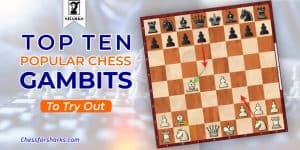



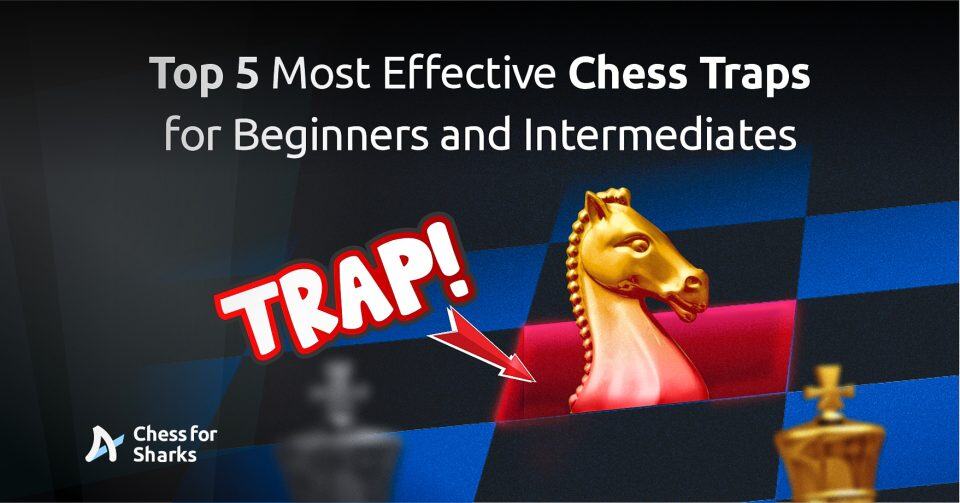


join the conversation